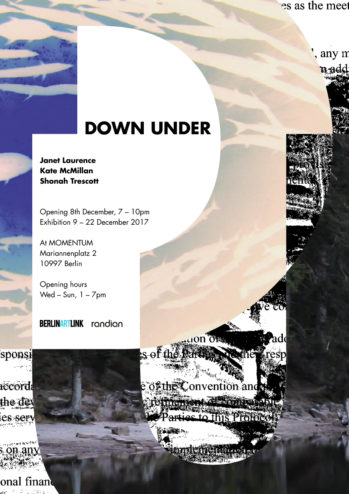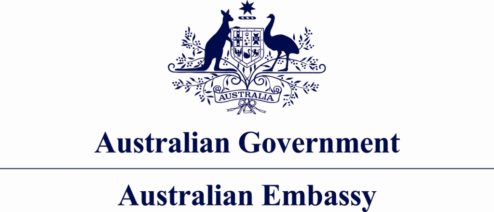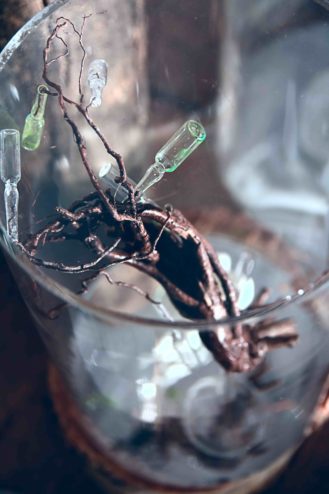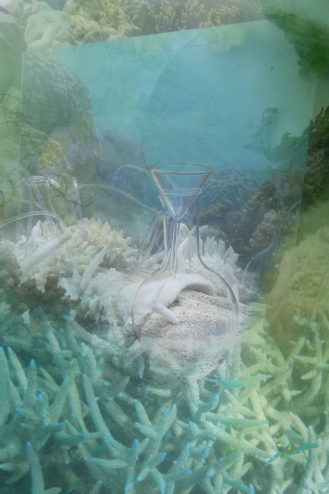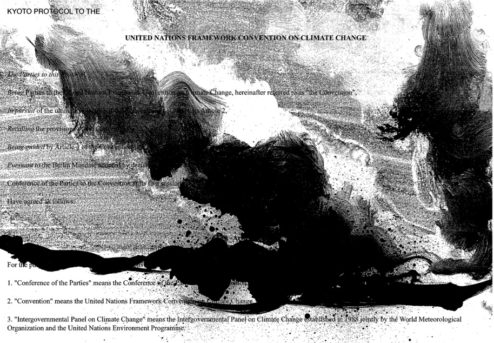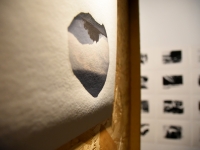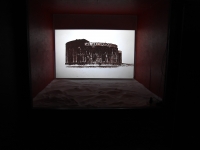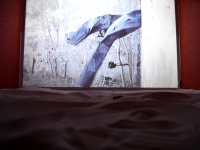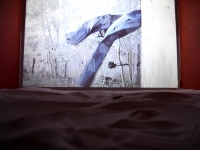To mark the end of 2017, which is the year of friendship between Australia and Germany, MOMENTUM holds two concurrent shows with an all-Australian line-up, taking us back to our Australian roots (MOMENTUM having been founded in Sydney before moving to Berlin in 2011).
MOMENTUM’s two exhibitions, taking place in parallel at the Kunstquartier Bethanien, are:
Kate McMillan’s solo show The Past Is Singing In Our Teeth,
and DOWN UNDER featuring three Australian women from the MOMENTUM Collection: Kate McMillan, Janet Laurence, and Shonah Trescott.
CLICK HERE FOR The Past Is Singing In Our Teeth > >
Kate McMillan, Janet Laurence, Shonah Trescott
Curated by Rachel Rits-Volloch
9 – 22 December 2017
OPENING 8 December @ 7-10pm
@ MOMENTUM, Kunstquartier Bethanein
Mariannenplatz 2, Berlin 10997
DOWN UNDER brings together three Australian artists from the MOMENTUM Collection – Kate McMillan, Janet Laurence, and Shonah Trescott – all of whom engage in their practice with the impact that humankind has upon our planet, both through mankind’s role in relation to the environment, and through the construction and re-construction of memory, and how this impacts upon our perceptions of past and future. How reliable is memory when the act of re-membering itself is prone to so many reconstructions of the past? How can we foresee the future, when we can’t even agree on a past? How different is our perspective on both our internal and external landscapes when viewed by artists from the other hemisphere?
Kate McMillan’s works from the MOMENTUM Collection, the video diptych Paradise Falls I & II (2011/12), are shown alongside more recent works, such as the three part photo series entitled The Vast Structure of Recollection (2017), in which she explores the relationship between body memory and landscape, and her video installation The Island Is Silent (2017), which she made during her Artist Residency at the National Center of Contemporary Art (NCCA) St. Petersburg, on the island of Kronstadt. Using film, photography and sculpture, McMillan explores how the intense residue of memory can be located through quiet gesture, landscape, and the objects we carry around with us. Exploring internal and external landscapes alike, McMillan’s practice encompasses an open-ended dialogue between abstraction, felt experience and memory; a sort of visual poem. She premiers a new body of work in her solo show The Past is Singing in My Teeth, taking place in parallel to this exhibition.
Paradise Falls I (2011/12), HD Video, 2’49”
Paradise Falls I (2011/12, courtesy of the MOMENTUM Collection) is the philosophical culmination of the time McMillan spent in Switzerland in 2011 as well as her ongoing PhD project into the forgetting of the history of Wadjemup/Rottnest Island, Western Australia. This significant body of work highlights a shift in her practice, evidenced by a dark and moody palette and the combination of figurative and abstract works that set up an interplay between landscape, memory, forgetting and history. Working across a diverse range of mediums including painting, collage, photography, film and sculpture, this exhibition examines the complex and sustaining residue of these overarching themes. The works cover a range of specific landscapes including Wadjemup/Rottnest Island, the Black Forest in Germany and the winter landscapes of Switzerland. With a focus on island sites and places that exist in isolation, the works attempt to draw parallels between physical landscapes and the psychological landscapes of the artist’s own memories, broader cultural histories and stories.
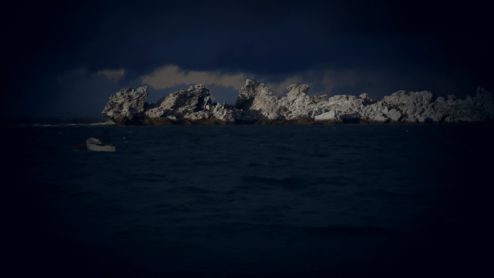
Paradise Falls II (2011/12), HD Video, 3’28”
Paradise Falls II (2011/12, courtesy of the MOMENTUM Collection) follows a man as he rows towards the silhouette of a craggy island off the coast of Wadjemup/Rottnest. He too appears and disappears from sight, finally lost to the inky black of the ocean. These characters are stand-ins for fractured and partial histories that disappear from focus, yet continue in our collective psyche as dark and haunting traumas. The films are like moving paintings, heavily referencing the romantic tradition of Germanic landscape painting. Unsurprisingly then the work of artists such as Arnold Bocklin (1827-1901) and Casper David Friedrich (1774-1840) become distant cousins to McMillan’s oeuvre. The artist acknowledges and even embraces these quotations but she also holds them in a critical eye as part of an enlightenment ideology that has helped us to forget. Through engaging with the viewing process we participate in a re-remembering, acknowledging the shady edges of things, but also baring witness to the beauty of sadness that is contrary to the horrors of forgetting history.

The Island Is Silent (2017), Video Installation, 3’20”, salt, plaster
The Island Is Silent (2017) takes as its starting point the story of Russian Poet Anna Akhmatova (1889-1966) eating her poems to conceal them during the period of Stalinist oppression. McMillan recreates this act using poems she wrote in Pittman’s shorthand, a rapid method of writing used by her mother for taking dictation. She recalls illegible notes left around the family home recording shopping lists, draft letters and other texts she could not decipher as a child. During McMillan’s residency in St Petersburg with NCCA in 2016, she taught herself Pittman’s shorthand. In The Island is Silent we can see McMillan slowly eating her own words as she stands within a cork-lined film set constructed in her studio. The cork room is a reference to Marcel Proust who famously wrote In Search of Lost Time (1913) from a cork lined bedroom in Paris. The cork creates a physical and sound barrier from the outside world. For Akhmatova and McMillan, the body becomes a container of secrets, of lost information – an island of isolation that serves as a barrier to the outside world.
The footage of McMillan eating the poems is then overlayed with interrelated footage, including images of Fort Alexander on the island of Kronstadt, recorded during her NCCA Residency. The fortress island built in the Gulf of Finland by Alexander the Great served to protect St Petersburg from outside invasion. The Island is Silent also incorporates the cavernous structure inside Fort Alexander; the stone and concrete tunnel system forms a giant oesophagus mirrored with found footage of an endoscopy. These cavernous spaces were used by scientists to test for vaccines on animals in the early 20th century. This connects to other Archival film sequences from a Cold War covert germ warfare experiment called ‘Operation Cauldron’ on the Isle of Lewis in Britain in 1952. Removed from their context and presented in their mute state, the reworked footage suggests polarised divisions are unclear and meaningless. The structure of the film is more like a moving collage, refusing a narrative – instead attempting to allude to the sensation of oppression, isolation and of being deep within the body. Conflating the personal and the political, drawing analogies between the present and the past, the work continues McMillan’s interest in seeing connections between all things. The sound, composed by Cat Hope, and titled ‘Shadows’ is played by two instruments who shadow each other throughout the score.
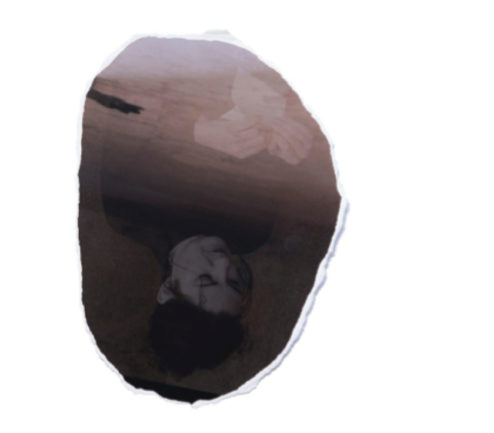
The Vast Structure of Recollection (2017), 3 prints: c-type photograph, torn, digitised and printed onto archival cotton rag
The Vast Structure of Recollection (2017) is an edition of three prints. Each print provides an insight into different aspects of Kate McMillan’s work: a photograph from a site visit to Pontikinisi in Greece for the development of The Moment of Disappearance (2014); a film still of my clenched hand used in two film works, Tuned Darker (2015) and Stones for Dancing, Stones for Dying (2016) – both of which indicate a material and aesthetic shift central to the development of a number of important sculptural works; and a collaged film-still from the work The Island is Silent (2017), also shown here.
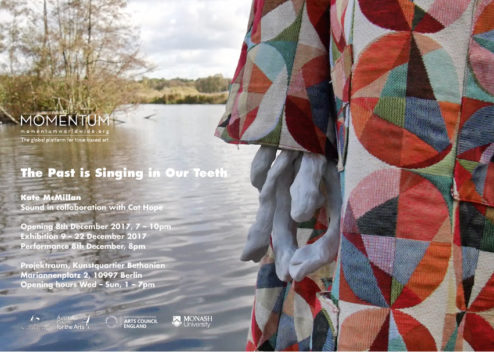
Kate McMillan’s solo exhibition, The Past Is Singing In Our Teeth (2017), is concurrently on view at Projecktraum in the Kunstquartier Bethanien, downstairs from the MOMENTUM gallery. The Past Is Singing In Our Teeth extends the notion that artworks, objects and even smells can serve as an umbilical cord back in time, thus functioning as an intermediary into the past – in this case, a fictional past reinvented in the absence of women’s histories. Like a conjuring or a haunting, it seeks to draw a line around the things that sit at the periphery of our vision. In particular, it imagines a lost archive of women’s knowledges, a remembrance of which is triggered through the recovery of sacred objects and landscapes. A mixed-media collage, The Past is Singing in our Teeth reconstructs a labyrinth of lost things through a film-based installation incorporating projected films, photography, sound, performance and sculpture. During the exhibition opening, the sculptures will be ‘performed’ as musical instruments by Perth-based percussionist Louise Devenish based on a score written by Australian composer Cat Hope.
Kate McMillan’s work incorporates a range of media including sculpture, film, sound, installation and photography. McMillan is interested in the linking narratives of forgetting and place, often focusing on the residue of the past. Her artworks thus act as haunting memory-triggers for histories and ideas that are over-looked.
Previous solo exhibitions include Songs for Dancing, Songs for Dying, 2016, Castor Projects, London; The Potter’s Field, 2014, ACME Project Space, London; Anxious Objects, Moana Project Space, Australia; The Moment of Disappearance, 2014, Performance Space, Sydney; In the shadow of the past, this world knots tight, 2013 Venn Gallery; Paradise Falls, 2012, Venn Gallery; Lost at the John Curtin Gallery in 2008, Broken Ground in 2006 at Margaret Moore Contemporary Art and Disaster Narratives at the Perth Institute of Contemporary Arts for the 2004 Perth International Arts Festival. Her work has been featured in various museums and biennales, including the 17th Biennale of Sydney; the Trafco Centre for Contemporary Art, Poland; Minsheng Art Museum, Shanghai; Art Gallery of Western Australia; Gertrude Contemporary, Melbourne; Perth Institute for Contemporary Art; John Curtin Gallery, Perth; Govett Brewster Art Gallery, New Plymouth and the Australian Centre for Photography, Sydney.
In 2017 she was a finalist in the Celeste Prize curated by Fatos Üstek. In 2016 she was invited to undertake a residency in St Petersburg as part of the National Centre for Contemporary Art (NCCA) where she developed new film works which were shown at the State Museum of Peter & Paul Fortress in Russia in 2017. In early 2017 she was selected to be in the permanent collection at The Ned, for Vault 100, a new Soho House project which reversed the gender ratio of the FTSE 100 by showing the work of 93 women and 7 men. In 2016 McMillan took part in ‘Acentered: Reterritorised Network of European and Chinese Moving Image’ during Art Basel Hong Kong, curated by Videotage. In 2015 McMillan was included in ‘StructuralObject HouseProject27’ curated by Linda Persson at a site in Greenwich, London, alongside other artists such as Bridget Currie and Laure Provoust.
Since 2002 she has also undertaken residencies in London, Tokyo, Basel, Berlin, Sydney, Beijing and Hong Kong. She has resided on the Board of the Perth Institute of Contemporary Arts (PICA) and the National Association for the Visual Arts (NAVA) based in Sydney. Her PhD (2014) explored the capacity for Contemporary Art to unforget colonial histories. McMillan lectures on the Masters Program in the Department for Culture, Media and Creative Industries at King’s College, London. She has also guest lectured at The Ruskin, Oxford University. Her PhD is currently being developed into a book called ‘Contemporary Art & Unforgetting: Methodologies of Making in Post-settler Landscapes’, published by Palgrave Macmillan in 2018.
Her work is held in private collections around the world, as well as in the Christoph Merian Collection, Basel; Soho House Collection, London; Art Gallery of Western Australia; Wesfarmers Arts Collection; KPMG; Murdoch University, Australia; University of Western Australia and Curtin University, Australia.
Renowned Australian artist Janet Laurence is best known for her work with the environment, often undertaken together with scientists engaged in international conservation initiatives. Laurence’s practice is a direct response to contemporary ecological catastrophes, positioning art within the essential dialogue of environmental politics to create and communicate an understanding of the impact that humans have upon the threatened natural world, in order to restore our vital relationships with it. Works from three series are shown here: the Vanishing series, depicting endangered animals on the verge of extinction; Chlorophyll Collapse, a series addressing the extinction of plants endemic to the anthropocene; and Deep Breathing, shot while working with scientists researching corral collapse in Australia’s Great Barrier Reef, and commissioned for Artists 4 Paris Climate, the exhibition program for COP21, the UN Climate Change Conference which took place in Paris in 2015.
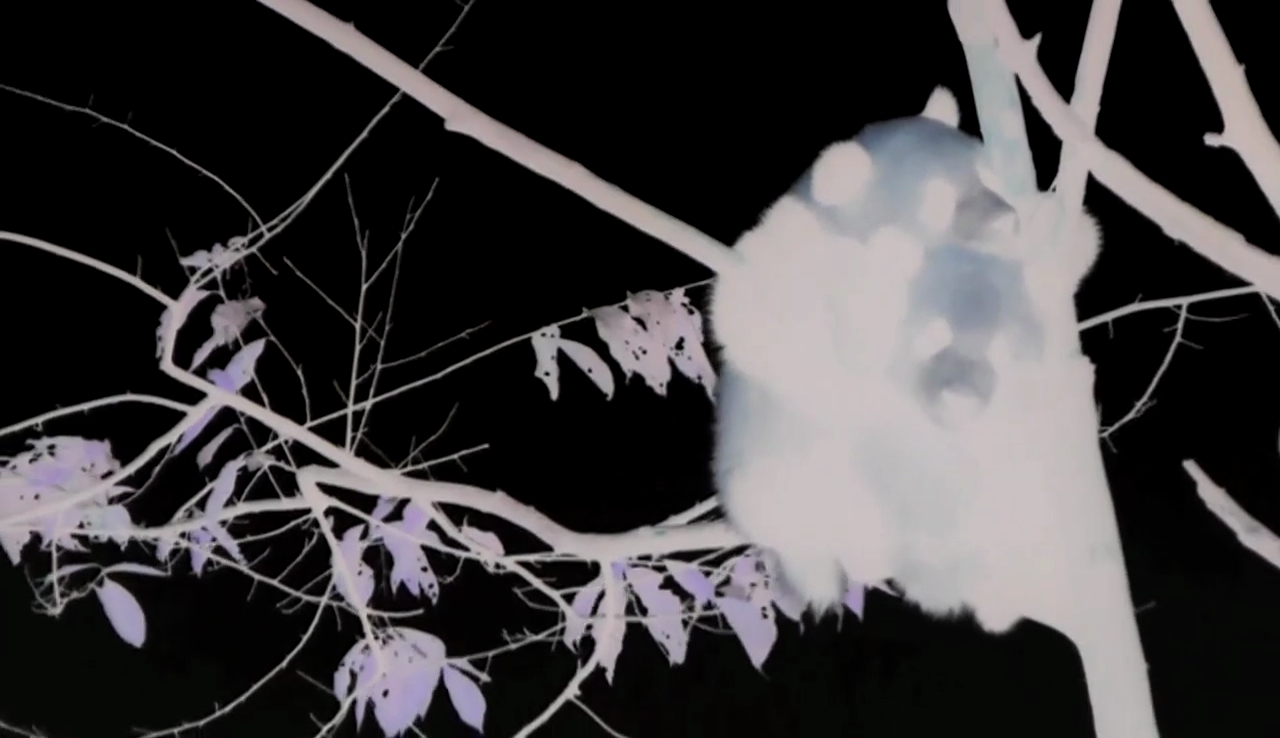
The Other Side Of Nature / Panda (2014), HD video 9’18”
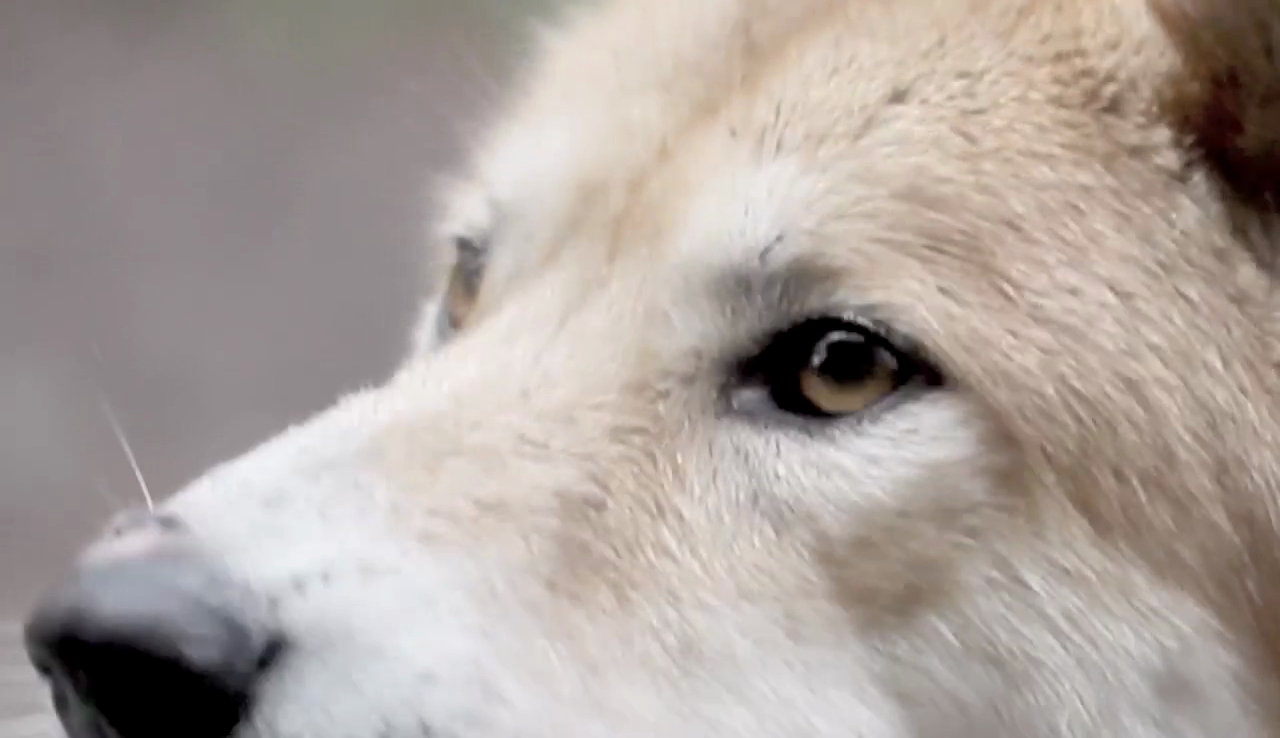
Dingo (2013), HD video 4’9″
Reflecting on the loneliness of the last of a species, The Other Side of Nature / Panda (2014), and Dingo (2013), shot in nature reserves in Chengdu, China and Victoria, Australia, chronicle in intimate proximity the lives of animals that could soon be the last of their kind.
“These are the days of violent extinctions, of global dimming and moving dust bowls, of habitat fragmentation, ice melt, and plundered lives. Animals are experiencing all this loss, and if we could better hear the waves of their agony, we would know this and be tormented.” (Debbie Bird Rose)
Transplant: a Forest for Chlorophyll Collapse (2017), Installation: wood, glass, plexiglass, plants, drawings, 3D printed objects (in cooperation with Leslie Ranzoni)
Transplant: a Forest for Chlorophyll Collapse revisits Janet Laurence’s Inside the Flower installation which she made for IGA Berlin 2017. The IGA work formed an experiential contemporary medicinal garden, immersing the viewer into our historical, spiritual and mythological relationship with psychotropic plants; an invitation to understand medicinal plants in a time of biochemical intelligence, when their roles in nature and history are being reconsidered. The Cellular Vitrines from Inside the Flower are here transplanted into a gallery context to bring renewed life to broken, fallen trees. Are they regeneration cells or medicines, analgesics for our wounded world? The world was once forest. The trees used in this installation are the remnants of the destruction waged this year by Berlin’s autumn storms, felling trees throughout the city. A medicinal garden sprouts out of the detritus of winds and floods symptomatic of global warming and endemic to the anthropocene, posing the the hopeful possibility of healing our planet.
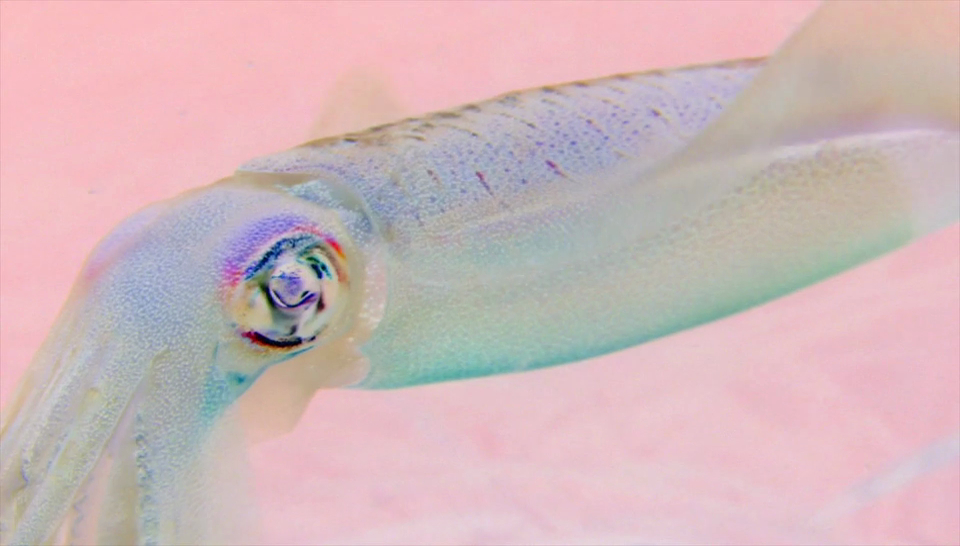
Deep Breathing: Resuscitation for the Reef (2015), HD video 32’58”
Janet Laurence’s video Deep Breathing – Resuscitation for the Reef (2015), and accompanying photo series Corral Collapse Homeopathy (2015) were created for the UN Climate Conference,COP21, in Paris. Shot in Australia’s Great Barrier Reef – a World Heritage site which is the planet’s largest living, and rapidly dying, structure – this series of works envisions a hospital for the Reef’s threatened corals and other marine species, making visible the otherwise invisible devastation beneath the surface of the sea, and offering hope for the healing of the marine world from the consequences of global warming and human impact. If we can care for marine life in the same way that we care for our own species, there is a chance of deflecting environmental catastrophe. Laurence’s work is an emergency response: a hospital for the Reef in this time of ecological crisis, intended to aid survival and effect transformation.
Corral Collapse Homeopathy No. 8 (2015), series of 10 photo
Janet Laurence is among Australia’s most established artists. In 2015 she was the Australian representative for the COP21/FIAC, Artists 4 Paris Climate Exhibition for the UN Climate Conference in Paris, for which she created Deep Breathing – Resuscitation for the Reef and Corral Collapse Homeopathy, both shown in this exhibition. Further selected recent international projects and exhibitions include: Matter of the Masters, Art Gallery of New South Wales, Sydney (2017-18); Lost Habitats, Nautilus Exhibition, Oldenburger, Germany (2017); Warning Shot, Topography of Art, Paris (2017); Moving Plants, Rønnebæksholm, Denmark (2017); Force of Nature, The Art Pavilion, curated by James Putnam, London (2017); the 57th Biennale of Venice (2017); Veiling Medical Glass, A Medicinal Maze, Novartis Campus, Sydney (2017); The Treelines Track, Bundanon, Australia (2017); GASP: Parliament, Hobart, Tasmania (2017); Inside the Flower, IGA Berlin (2017); AUFTRAG LANDSCHAFT, Schloss Biesdorf, Berlin (2017); The Pleasure of Love, October Salon, curated by David Elliot, Belgrade (2016); H2O Water Bar, Paddington Water Reservoir, Sydney (2016); Deep Breathing (Resuscitation for the Reef), Australian Museum, Sydney (2016); Cuenco Bienal, Cuenco, Ecuador (2016); Deep Breathing: Resuscitation for the Reef, Musée National d’Histoire Naturelle, Paris (2015); The Skullbone Experiment: A Paradigm of Art and Nature, Queen Victoria Museum, Tasmania (2014); Animate/ Inanimate, TarraWarra Museum of Art, Australia (2013); 1⁄2 Scene, Australia China Art Foundation Shanghai (2013); SCANZ: 3rd Nature, New Plymouth, New Zealand (2013); After Eden, Sherman Contemporary Art Foundation, Sydney (2012); The Alchemical Garden of Desire, McClelland Gallery, Victoria, Australia (2012). Janet Laurence is a recipient of Rockefeller, Churchill, and Australia Council Fellowships, and the Alumni Award for Arts, University of New South Wales. She was a Trustee of the Art Gallery of New South Wales, a former Board Member of the Visual Arts Board of the Australia Council, and is a Visiting Fellow at the New South Wales University Art and Design, and at the Hanse-WissenschaftKolleg (HWK), Germany (2016-2017).
Shonah Trescott is an award winning Australian artist, known for her work centering around mankind’s relationship with the natural world. Her work focuses on how humans create, interact with and impact upon the material and cultural landscapes we inhabit. The text-based works shown in this exhibition, Ode to Paris (2017) and Kyoto Protocol (2014) both take as their starting points two documents which are the most crucial international agreements designed to mitigate climate change.
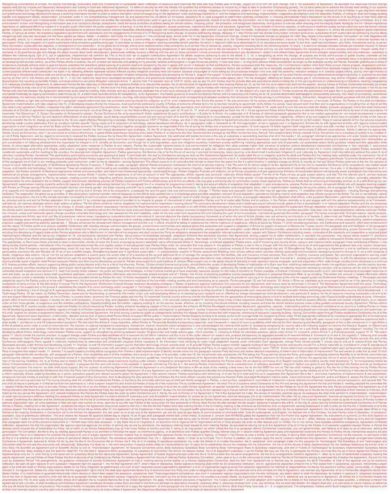
Ode to Paris (2017), print on paper
Shonah Trescott’s Ode to Paris (2017, courtesy of the MOMENTUM Collection) is a surreal poem created in the ‘cut-up’ method devised by avant-garde Dadaist Tristan Tzara in How To Make a Dadaist Poem (1920):
Take a newspaper.
Take some scissors.
Choose from this paper an article the length you want to make your poem.
Cut out the article.
Next carefully cut out each of the words that make up this article and put them all in a bag.
Shake gently.
Next take out each cutting one after the other.
Copy conscientiously in the order in which they left the bag.
The poem will resemble you.
And there you are—an infinitely original author of charming sensibility, even though unappreciated by the vulgar herd.
Using this method Shonah Trescott created Ode to Paris after Donald Trump announced in the ‘Rose Garden’ in July 2017 that the USA would withdraw from the Paris agreement, reached at the UN Conference on Climate Change, COP21. The entire ‘Paris Agreement’ document of over 7,500 words becomes a red cloud as a reference to the rose garden, a narrative lost in a rambling and incoherent stream of ‘alternate facts’. Created from the very document which aimed to unify the world in setting a target to keep global mean temperature rise below 2 degrees Celsius, the very meaning of the agreement becomes no longer legible, and by the nature of chance even describes such antipodal sentences to the intent of the agreement. All at once this word cloud could be read both as a sobering manifesto, an incomprehensible warning of the gravity of the ‘business as usual’ road ahead, while simultaneously ridiculing a president who insists with child-like defiance that the USA stands alone as the only non signatory to the Paris Agreement.
Kyoto Protocol (2014), silkscreen on paper x 24
Also shown here is an earlier work, Kyoto Protocol (2014, courtesy of Gallery Eigen+Art), resulting from Shonah Trescott’s participation in a scientific expedition to the Arctic. In 2012 Shonah was invited by the Alfred Wegener Institute for Polar and Marine Research as Artist in Residence in the high Arctic, where she lived and worked with the scientific community at the German/ French AWIPEV Koldeway Station, Ny-Alesund, Svalbard. Probing the meeting places of art, science, imagination and memory, here in the most northerly settlement of the world she observed the ecological and human impact caused by anthropogenic environmental negligence and climate disruption. Shonah took the approach of a true artistic expedition to record and to document her concerns with the landscape; a process she sees as relating human culture and function to its surroundings. Diverging from her usual practice of painting, Shonah’s Arctic experience caused her to explore the mediums of photography, printmaking, and video, as she archived and captured the dark and light side of the high Arctic.
Probing the meeting places of art, science, imagination and memory, Shonah observed the ecological and human impact caused by anthropogenic environmental negligence and climate disruption. Questioning the current lack of international protection of the Arctic environment, Shonah began looking at environmental treaties alongside the past and current exploitation of the land taking place in the Arctic region. Using the Kyoto Protocol (an international Protocol aimed at collaboration between nations to curb emissions) as a canvas to comment on our society’s addiction to fossil fuels, we see the evident shock she felt on seeing and experiencing first-hand the aggressive and continued exploitation of the Arctic environment through mining for coal and other minerals. These existing industrial processes which obliterate the intended impact of the Kyoto Protocol are highlighted in Shonah’s work Kyoto Protocol (2012), where she uses carbon to address the damage it continues to effect on the environment. In a layered practice filtered through multiple studies and techniques ranging from ink blots, mono-prints, photocopies and then silkscreen reproductions, Shonah addresses, through the idea of the carbon copy, our heavy (man made) carbon footprints. But these silk screen prints also hold a personal story which harks back to the landscapes of Shonah’s childhood in a town nestled in a valley in NSW Australia which is one of the largest coal mining areas in the country. It is her experience and memory of chimney stacks and scarred landscapes which re-occur in these prints. Here she plays with the idea of the reproduction and repetition of transforming something banal into something inherent and familiar, blurring the line between beauty of atmosphere and destruction of vistas. The familiar forms, smells, plumes and silhouettes of black carbon she found in the Arctic was, as she states, ‘is a testament which is all too close to home’. This screen print edition is a timely reminder of this international protocol which is presently subject for re-evaluation.
Shonah Trescott (b. 1982) is an Australian artist based between New York City and Berlin. She graduated from the National Art School, Sydney, Australia in 2005 with a Bachelor of Fine Arts majoring in painting. She has been the recipient of many awards and residencies including ‘La Cite Internationale Des Arts’ residency Paris, the ‘Leipzig International Arts Program’ Leipzig and the Martin Bequest Traveling Art scholarship. In 2011 she was an artist fellow of the ‘Hanse- Wissenschaftskolleg for Advanced Study’ ‘Arts in Progress Program’ and in 2012 she was the first artist of the residency project ‘Expedition Kunst und Wissenschaft’, a collaboration between the HWK and the AWI (‘Alfred Wegener Institute for Polar and Marine Research’) where she spent one month in Svalbard at the ‘AWIPEV Koldeway Station’. Her work is held in public and private collections in Germany, Australia, USA, Puerto Rico, and Japan. She exhibits with Eigen+Art Germany, Ando Gallery Tokyo and Dominick Mersch Gallery, Sydney.
INSTALLATION VIEWS
Photo Credit: Leslie Ranzoni


 Back to Homepage
Back to Homepage

